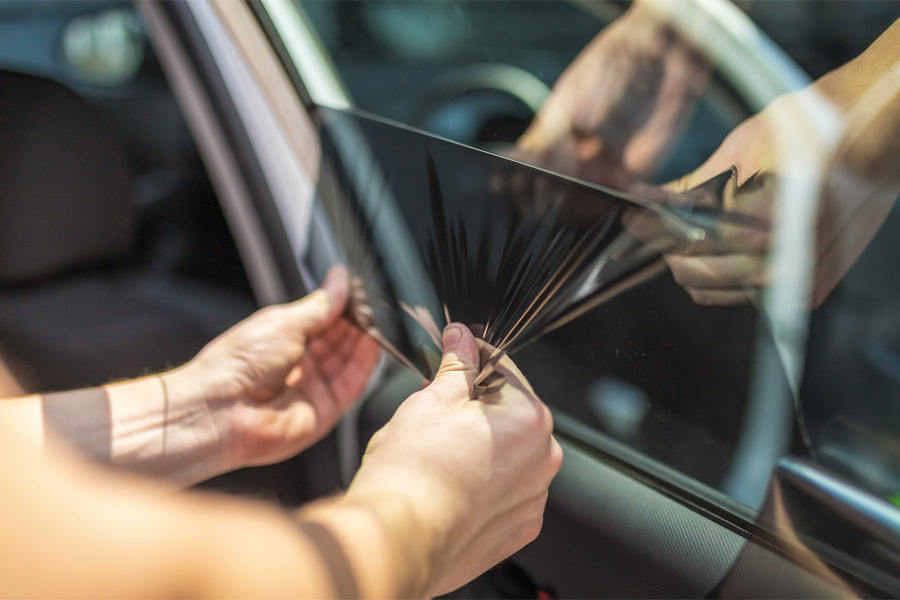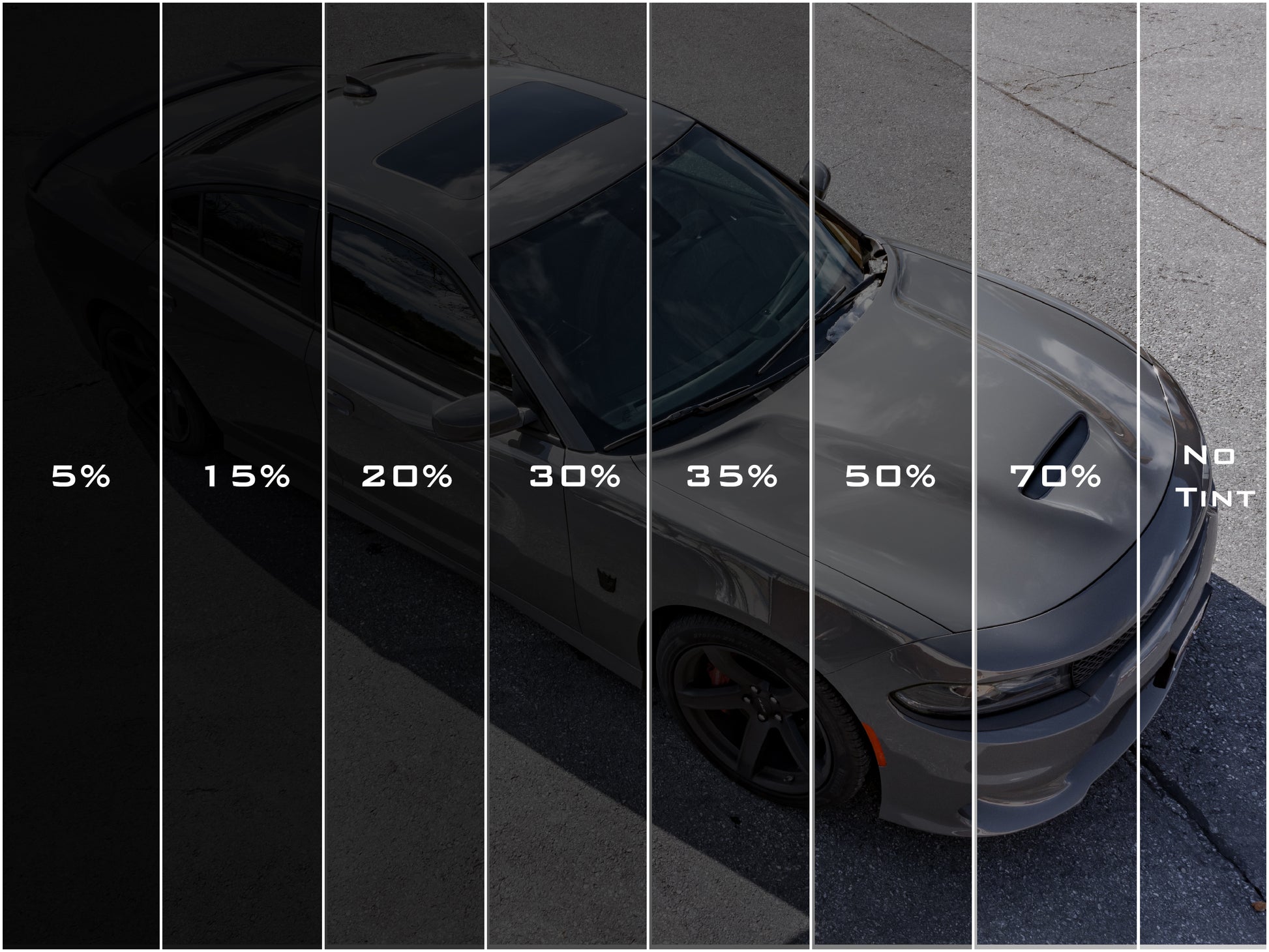Car Window Tinting for Warm Decrease and Power Effectiveness
Car Window Tinting for Warm Decrease and Power Effectiveness
Blog Article
Window Tinting Rules and Standards: What You Required to Know Before Tinting Your Vehicle
Prior to waging window tinting for your automobile, it is necessary to acquaint on your own with the diverse legislations and guidelines that govern this technique across different states. These regulations dictate the permissible levels of color darkness, usually gauged by noticeable light transmission (VLT) percents, and consist of specific specifications for front windscreens focused on guaranteeing roadway safety and security. Additionally, specific jurisdictions might use clinical exceptions for individuals with qualifying conditions. Understanding these intricacies can save you from possible lawful implications, however what are the specific rules in your state?
Overview of Window Tinting Laws
Home window tinting regulations are frequently based on variation across various territories, reflecting neighborhood regulations and security considerations. These legislations dictate the allowable degrees of color darkness and reflectiveness on automobile windows, guaranteeing that motorists preserve appropriate visibility while additionally protecting against unsafe UV rays and heat.
The majority of guidelines categorize home window tinting based on the Visible Light Transmission (VLT) percentage, which indicates the amount of light that can go through the home window. Generally, reduced VLT percents signify darker tints. Legislations typically differentiate in between the front, side, and rear home windows, with stricter restrictions related to the front windscreen to enhance safety and security for both the vehicle driver and other roadway customers.
Furthermore, some territories impose constraints on the reflectivity of the tint, protecting against too much glare that might harm presence. Exemptions to these laws may exist for people with particular medical conditions requiring extra sun security. Compliance with home window tinting laws is critical, as violations can result in penalties, mandatory elimination of the tint, and prospective rises in insurance costs. As a result, it is essential for vehicle proprietors to acquaint themselves with neighborhood regulations prior to waging home window tinting installments.
State-by-State Color Regulations
Recognizing the details window tinting policies in each state is vital for lorry owners seeking to conform with the law. Each state in the united state has established its very own set of rules governing home window tinting, which can vary substantially. These policies commonly determine the allowed levels of color darkness, the kinds of home windows that can be tinted, and any type of clinical exemptions that might apply.
As an example, states like The golden state have rigorous limitations on color darkness for front home windows, while others, such as New Mexico, might allow darker colors. Additionally, particular states mandate particular visibility percentages for different home windows, including the windscreen, front side home windows, and rear windows. It is critical for cars and truck owners to familiarize themselves with their state's regulations to prevent prospective fines or penalties.
Moreover, some states may call for a certification sticker to be positioned on tinted home windows, showing conformity with state regulations. Failing to follow these regulations not only takes the chance of lawful repercussions yet can likewise influence security and visibility while driving. Vehicle owners must perform complete research study or seek advice from neighborhood authorities to ensure full understanding and compliance with state-by-state tint policies.
Allowed Tint Types and degrees
Many vehicle proprietors might be amazed to discover that permitted color degrees and kinds differ extensively throughout different states. Each state has actually developed its very own guidelines concerning the permitted darkness and reflectivity of home window color, usually gauged by Visible Light Transmission (VLT) percents. VLT describes the quantity of light that can go through the colored home windows; hence, a lower percentage suggests a darker tint.

Moreover, the sorts of color materials allowed can differ, with some states prohibiting metal or mirror-like surfaces. It is necessary for lorry proprietors to acquaint themselves with their state's details legislations to make certain conformity. Non-compliance can lead to fines, mandatory removal of the tint, or various other legal effects, making it crucial to comprehend these regulations prior to waging installment.
Medical Exemptions for Tinting
While not all states provide allocations for clinical exceptions relating to window tinting, those that do identify the requirement for particular individuals to boost exposure and convenience due to clinical conditions. Different clinical conditions, such as lupus, skin cancer, and certain eye disorders, can make people especially conscious sunshine. These people may need darker tints to safeguard themselves from unsafe UV rays and glare.

It is essential to note that also with a clinical exemption, there might still be restrictions on the level of tint allowed. Conformity with state regulations makes certain that individuals are both secured and within lawful limits. Those considering clinical exemptions should contact their neighborhood Division of Motor Cars or equivalent authority to comprehend the demands and procedures required to get an exception effectively.
Penalties for Non-Compliance
Failing to adhere to window tinting legislations can result in considerable charges, which vary by state. Regulation enforcement agencies are encouraged to release citations for cars that do not stick to the defined tinting regulations. These the original source charges commonly consist of fines, which can vary from moderate amounts to several hundred bucks, relying on the severity of the violation and the state in inquiry.
In some territories, repeated offenses might lead to intensifying fines or additional charges, such as required court appearances. In addition, non-compliance may necessitate the removal of unlawful tinting, typically at the proprietor's cost. In severe instances, habitual offenders might face suspension of their car enrollment till conformity is accomplished.
In addition, insurance coverage effects may occur from receiving several citations for home window color offenses. Insurance firms may view such offenses as an image source indicator of riskier behavior, potentially resulting in raised costs or difficulty in coverage.
To link prevent these charges, it is critical for automobile owners to familiarize themselves with their neighborhood window tinting laws and make certain that their automobile complies (Window Tinting). This positive technique not just prevents legal ramifications but likewise advertises roadway safety
Final Thought

Most policies classify home window tinting based on the Visible Light Transmission (VLT) percentage, which suggests the quantity of light that can pass with the home window. Compliance with home window tinting laws is critical, as violations can result in penalties, obligatory elimination of the color, and prospective boosts in insurance coverage premiums.Recognizing the particular window tinting policies in each state is vital for lorry proprietors seeking to comply with the regulation. These policies commonly determine the allowable levels of color darkness, the kinds of home windows that can be tinted, and any kind of clinical exceptions that may apply.
For circumstances, states like California have rigorous limitations on color darkness for front windows, while others, such as New Mexico, may enable darker colors.
Report this page